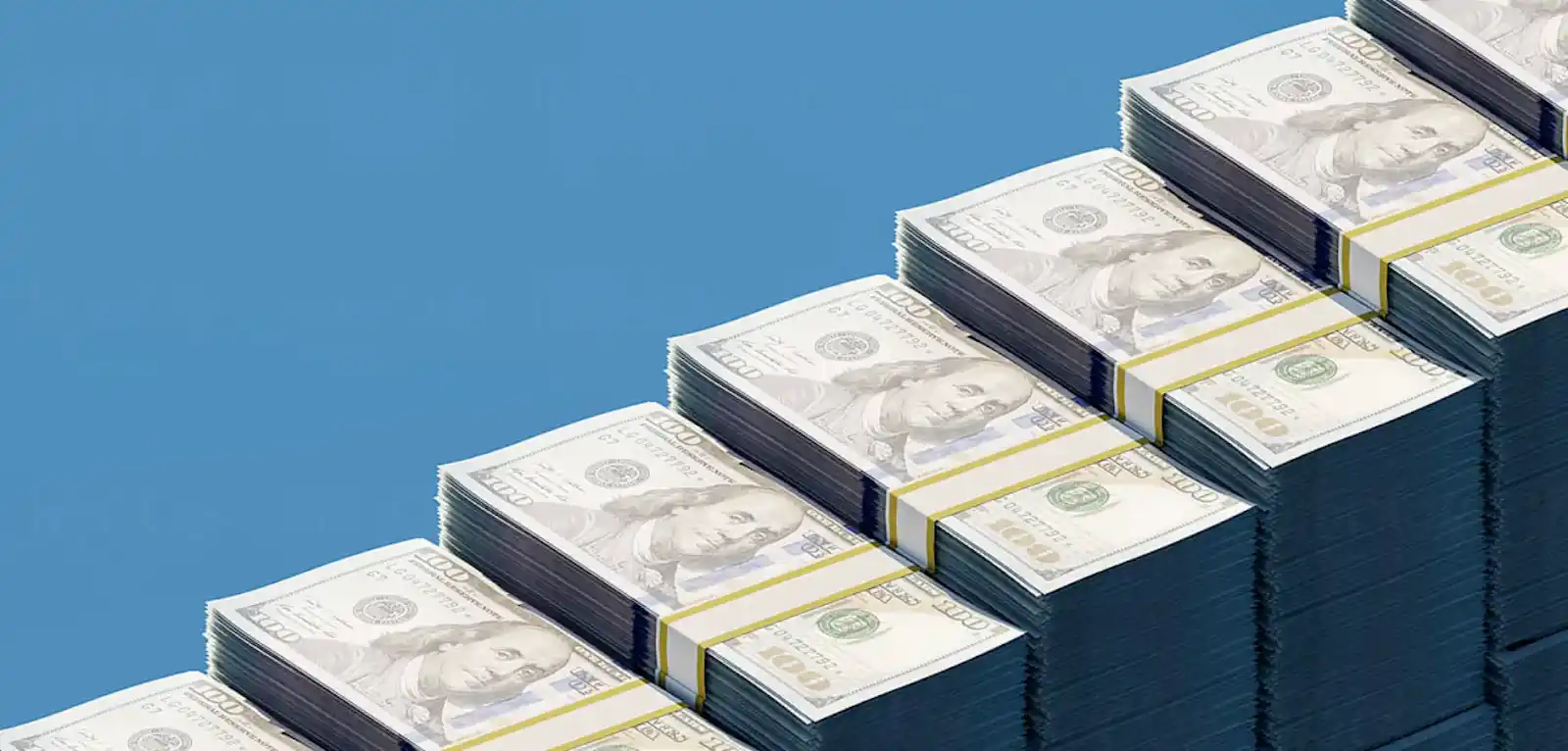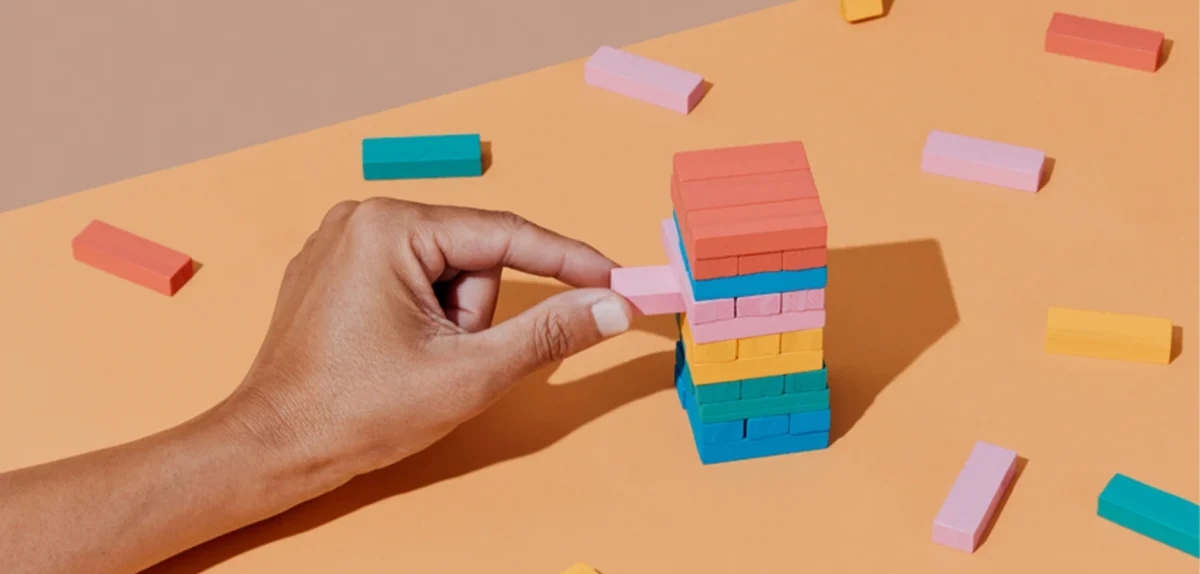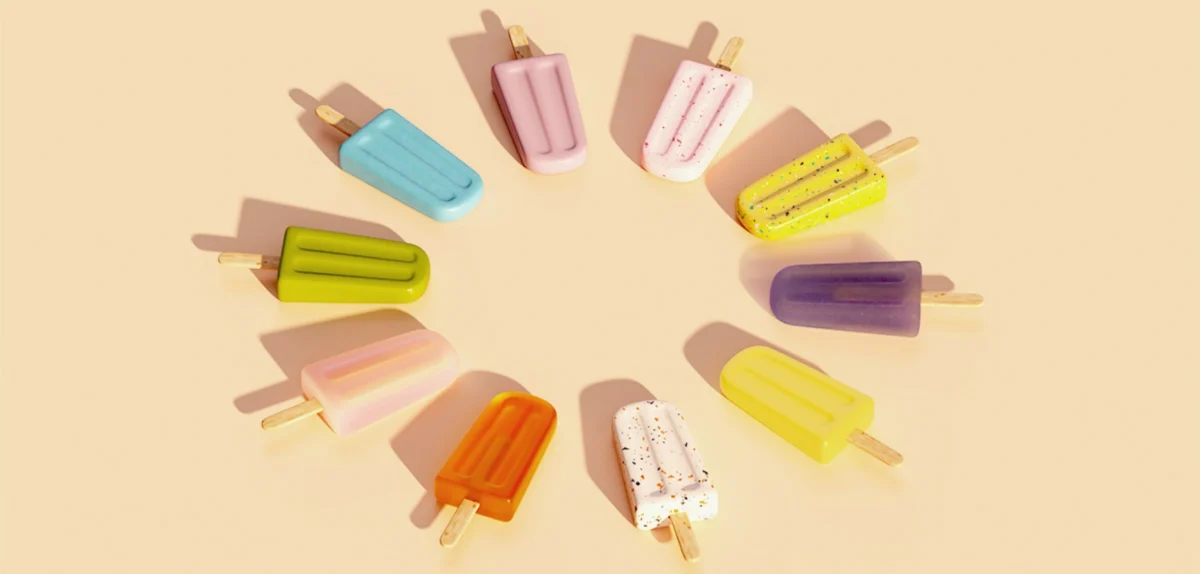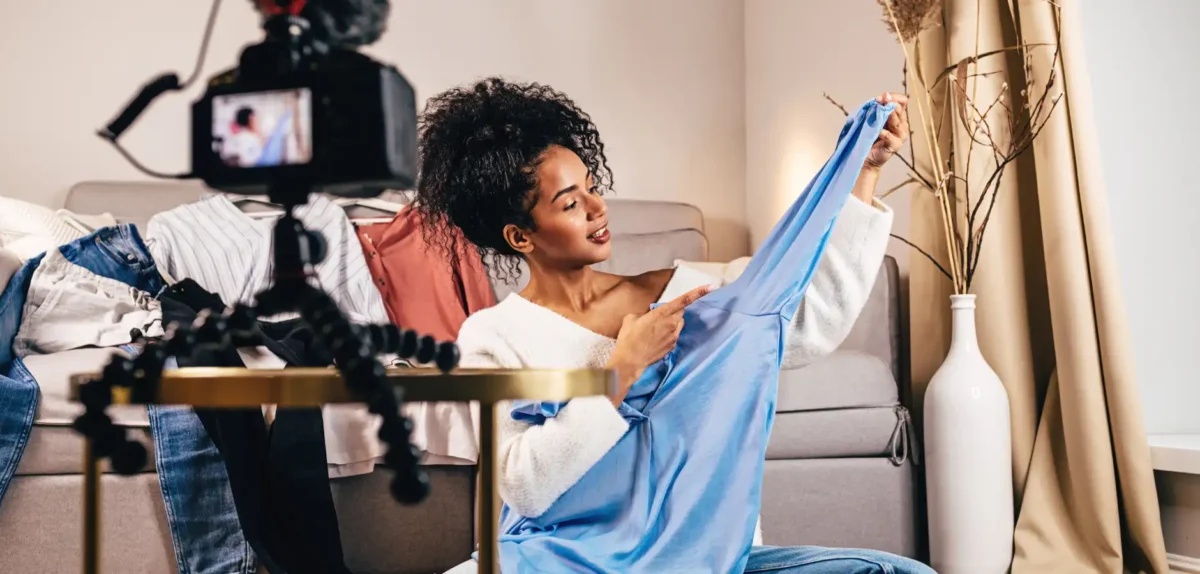Are you leaving money on the table? It’s a question that haunts many content creators.
Unseen riches could be slipping through your fingers. The key? Mastering the art of monetizing your work.
It’s time to turn the tables and transform your creative talent into profit. This article is your guide to unlocking the full potential of your content. Let’s uncover the best ways to make money as a content creator and turn your talent into tangible rewards.
Index
- Choosing the right partnerships for your content business
- Alternative ways to make money with your content
Key takeaways from this blog
- Creators must diversify their revenue streams to generate a full-time income.
- Brand partnerships are the keystone of many creators’ monetization mixes.
- Sponsorships work well for creators with a loyal and engaged audience in a specific niche.
- Affiliate marketing capitalizes on high traffic by allowing creators to earn sales commissions through trackable links.
- Paid user-generated content (UGC) can provide a solid income for creators with a small audience or work well as a side hustle.
Choosing the right partnership types for your content business
Partnerships are often the keystone monetization channel in a creator’s monetization mix. They usually pay well, offer a steady income stream, and help elevate your credibility.
Ultimately, partnerships allow you to get paid while building a stronger relationship with your audience by providing authentic recommendations that benefit them.
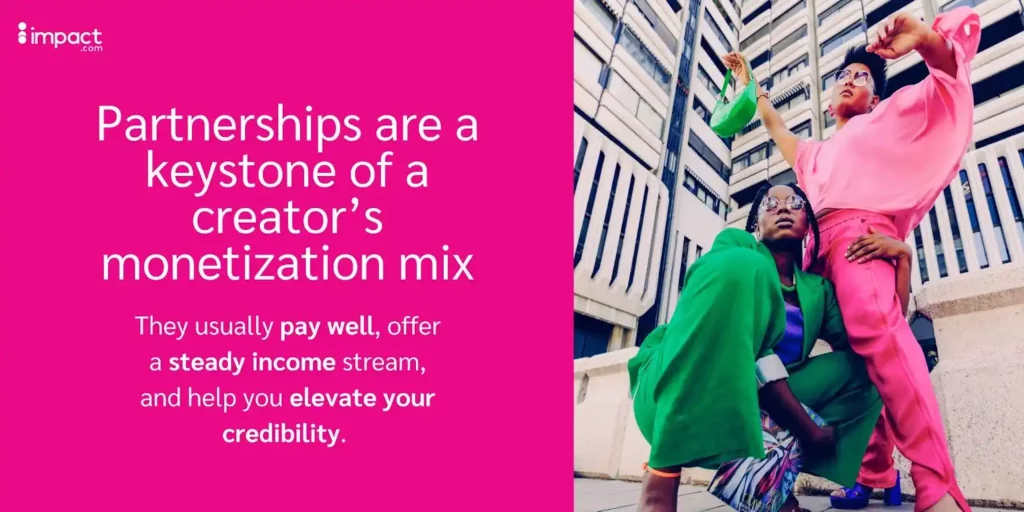
The right partnership monetization channel ultimately depends on who your audience is, what content you create, and your goals.
Need help navigating the maze of partnership monetization options? Let’s dive into four types of channels and look at the ups and downs of each so you can find your perfect match.
Sponsored content benefits creators with a well-defined audience
For most creators, sponsored content is your golden ticket to monetizing your passion. It involves teaming up with brands to showcase their products or services in a way that’s uniquely you.
This type of deal lets brands harness your influence to reach new audiences, expand their reach, and spread the word about their products or services.
Whether it’s an Instagram post where you’re rocking a trendy outfit, a YouTube video exploring the latest tech gadget, or a podcast episode featuring a sponsored shout-out––the possibilities are endless.
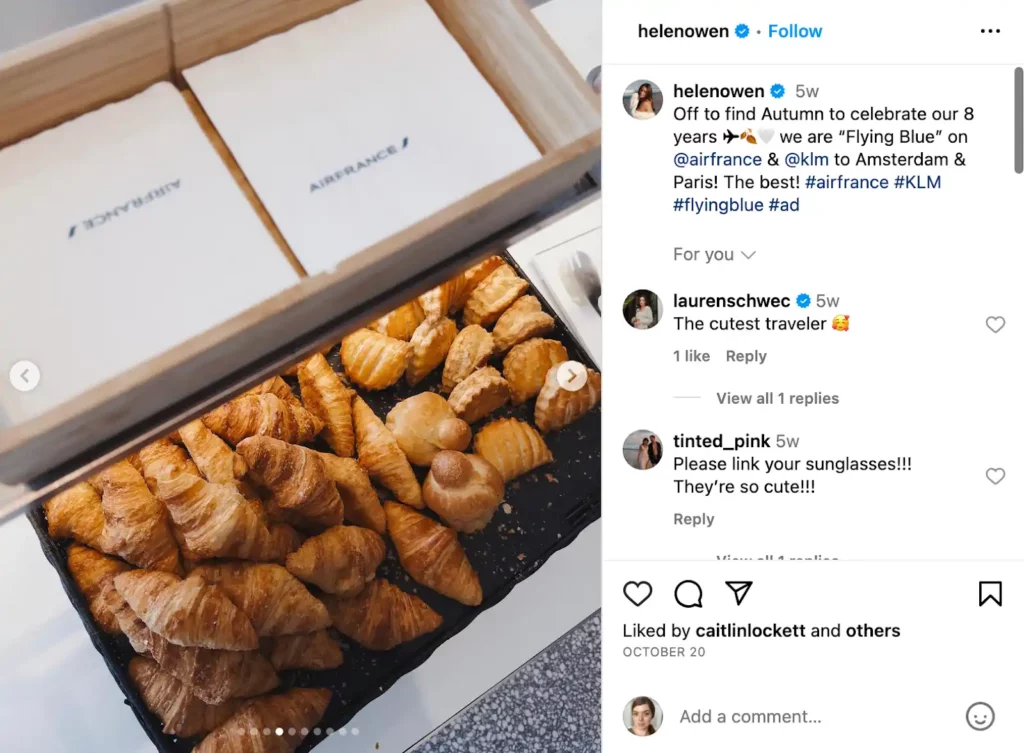
Instagram creator Helen Owen gracefully integrates the promotion of AirFrance. Her post features a well-crafted blend of her style and the brand’s essence, demonstrating how sponsored content can be authentic and appealing to followers.
Step-by-step guide to rocking sponsored content
- Pitch perfect: Start by approaching brands that resonate with your style and audience––most brands want creators to take the initiative. Got a knack for tech? Reach out to gadget companies. A fashionista? Collab with clothing brands.
- Talk terms: Once you’ve caught a brand’s eye, discuss and agree on compensation and guidelines. Creator contracts make sure you and the brand are on the same page.
- Crafting content: Once you’ve signed on the dotted line, it’s time to blend their message with your creative flair. Remember, authenticity is key. Your content should feel as natural and engaging as your usual posts.
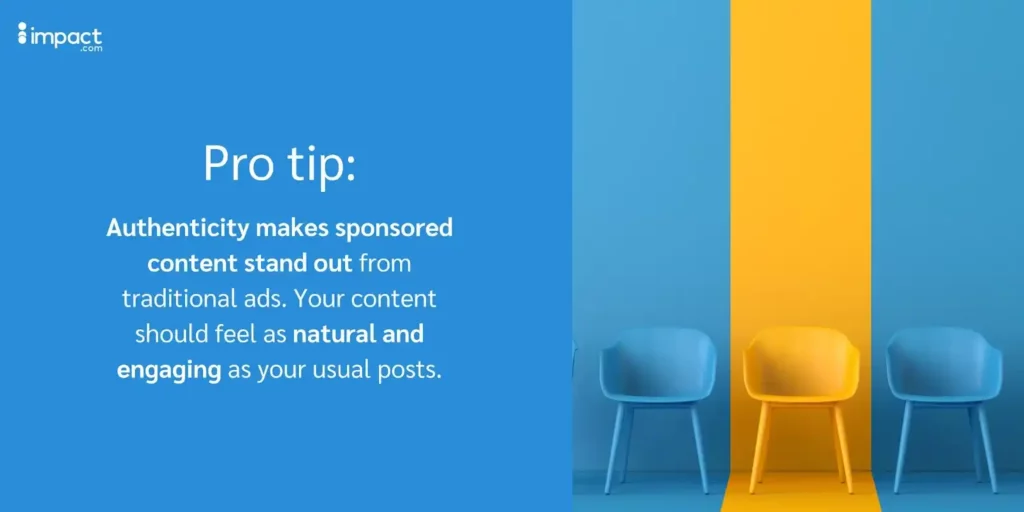
Who should create sponsored content?
Got an audience that hangs on to your every word and trusts your recommendations? Then you’re in a prime spot for sponsorships.
You have the upper hand if you understand who your audience is and what they want to see. A well-defined audience guides brands right to their target demographic—making you the perfect partner.
If your content falls into a specific niche, it’s easier for brands to see your value and select brands your audience cares about. But that doesn’t mean you need a niche to have successful sponsorships.
Most creators can benefit from sponsored content––it’s all about finding the right brand fit. For example, a fitness influencer can pitch a toothbrush brand if people always ask how they keep their teeth so white.
It’s also important to be comfortable creating ads for your channels and putting your heart into making your content your own. Sponsored posts need to feel sincere to be effective. Just blindly following a script won’t please the brand or your audience—authenticity is key.
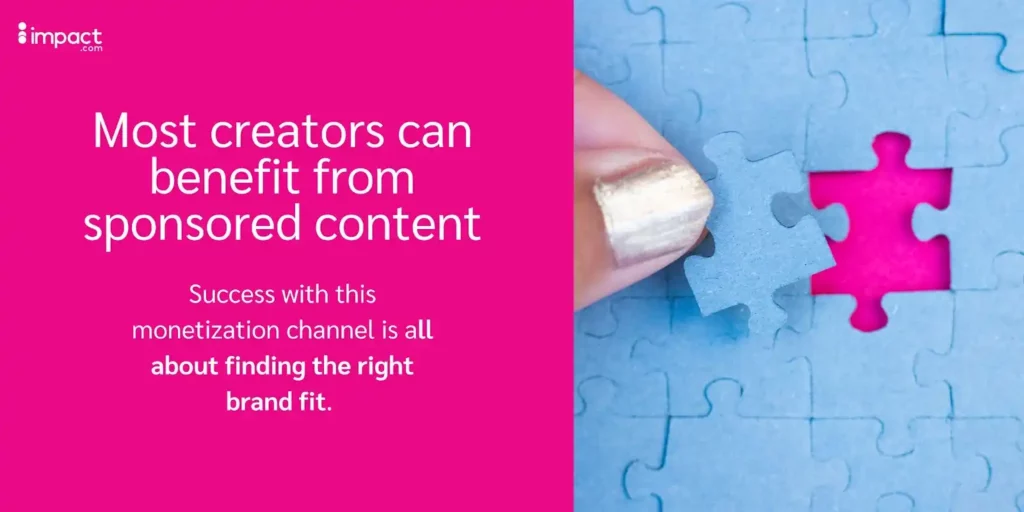
The upsides to sponsored content partnerships
- High revenue potential: When you click with a brand, there’s more chance your audience will love your content and convert.
- More legitimacy and exposure: Teaming up with cool brands boosts your credibility and broadens your reach.
- Creative collaboration: Opportunities to work on creative campaigns can add spice and variety to your content.
Navigating the challenges with brand collabs
- Keeping trust: When creators collab with brands that mismatch their values, audiences may lose trust and interest in their content. Always choose partnerships that align with your personal brand and your audience’s interests.
- Creative balance: Sometimes, brands want to dictate what type of content you share with your audience. Listen to the brand’s preferences and voice your ideas. After all, it’s your platform!
- Standing out: When you’re short on time, it’s tempting to send one pitch to multiple brands and hope a few respond. Create a unique pitch and an eye-catching media kit to stand out in a sea of creators.
Brand ambassadorships can give new creators a running start
Brand ambassadorships could be your jam if you’re thinking about diving deep with a brand and making a lasting impact. This isn’t just a fling. It’s a solid, long-term relationship with a brand you love and believe in. Think of it as a series of adventures rather than a one-time gig.
As an ambassador, you’re the go-to person for a specific brand. Whether you’re a TikToker showing off the latest jewelry trends or a YouTuber dishing out productivity hacks, you’re the expert for a given audience.
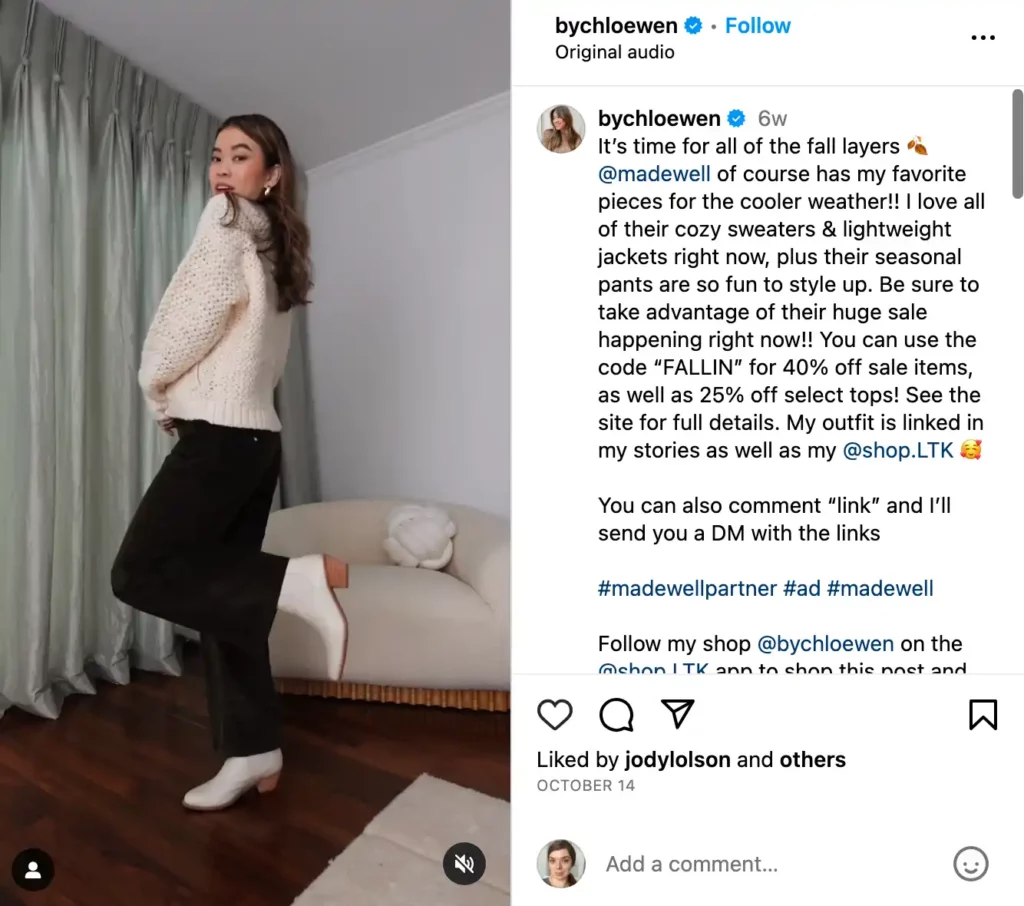
As a Madewell ambassador, Chloe Wen showcases a natural and engaging connection with the brand that effectively resonates with her audience.
Who is brand ambassadorship right for?
If you prefer to stick with one brand you love and dive deep, this partnership is for you. It’s less about playing the field and nurturing a bond with a brand that feels right. It also saves you the trouble of renegotiating your partnership terms whenever you work on a campaign together.
Brand ambassadorships can also be a good fit for creators just starting out. They offer an opportunity to build your portfolio, get practice working with a brand team, and strengthen your personal brand.
Remember that brand ambassadorships often limit who you work with, so they’re not always the best option if you collab with a huge portfolio of niche brands.
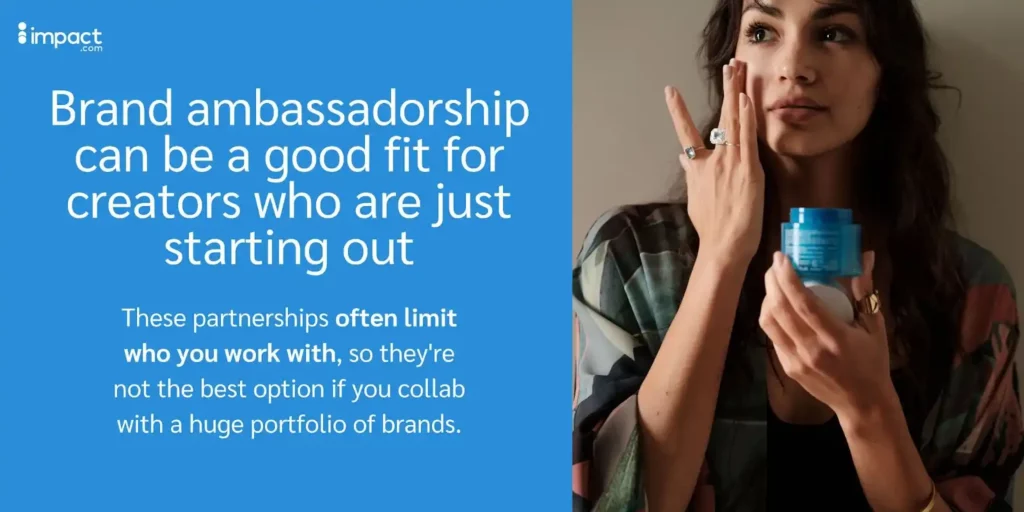
Why say ‘yes’ to ambassadorships?
- Steady earnings: You’ll have a more predictable bank balance if you receive regular payments or commission-based income.
- Boost your brand: Working with reputable brands over the long term can level up your credibility, and many brands will amplify your content on their channels, increasing your exposure.
- Long-term love: Creators often build solid relationships with brands they love and may get access to exclusive deals, free products, and a community of other like-minded people.
Challenges with ambassadorships (and how to tackle them)
- Stay true: It’s tempting to be an ambassador for any brand that will pay you. The problem is your audience will sniff it out, and your content will look false. Only partner with brands that resonate with you to maintain authenticity.
- Refreshing content: Brand ambassadorships are usually long-term, so creativity is your BFF. Keep your audience engaged by constantly reinventing how you present the brand.
- Financial real talk: The pay for brand ambassadorships may be lower than one-off deals and sometimes non-monetary—another crucial reason to partner with a brand you’re passionate about.
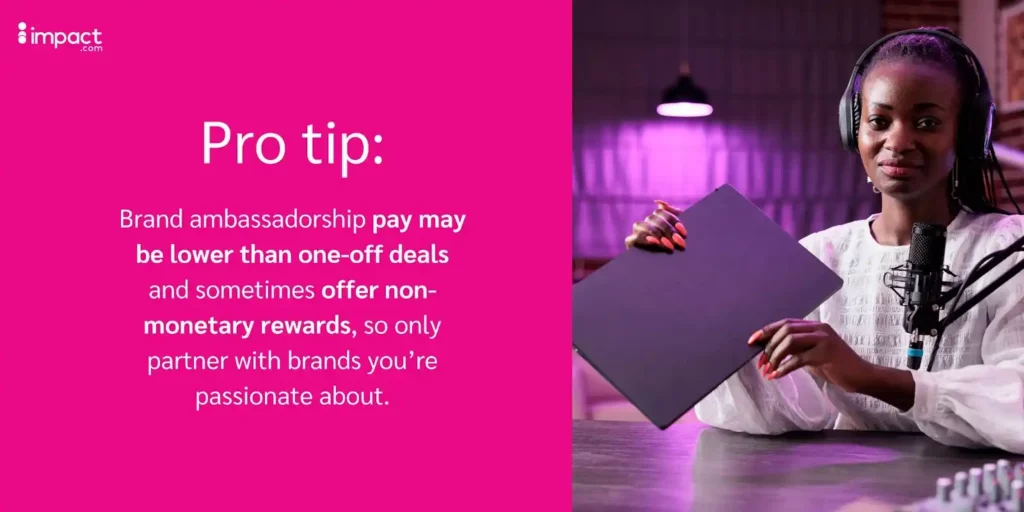
Affiliate partnerships rake in passive income
Are you ready to earn money even when you’re not actively creating? Welcome to the affiliate marketing world, where your content keeps working for you long after you hit “publish.”
It’s simple. You share your unique affiliate links for products you love and get paid when followers take an action.
How and when you’re paid depends on the brand’s affiliate program terms. But most of the time, you earn a commission when your followers buy through your link.
Success with affiliate marketing doesn’t rely on the size of your audience but on how engaged they are. Nano- or micro-creators’ smaller, loyal followings can rake in major affiliate earnings. They’ve got something that big influencers often lose as they grow: a close, tight-knit community and genuine engagement.
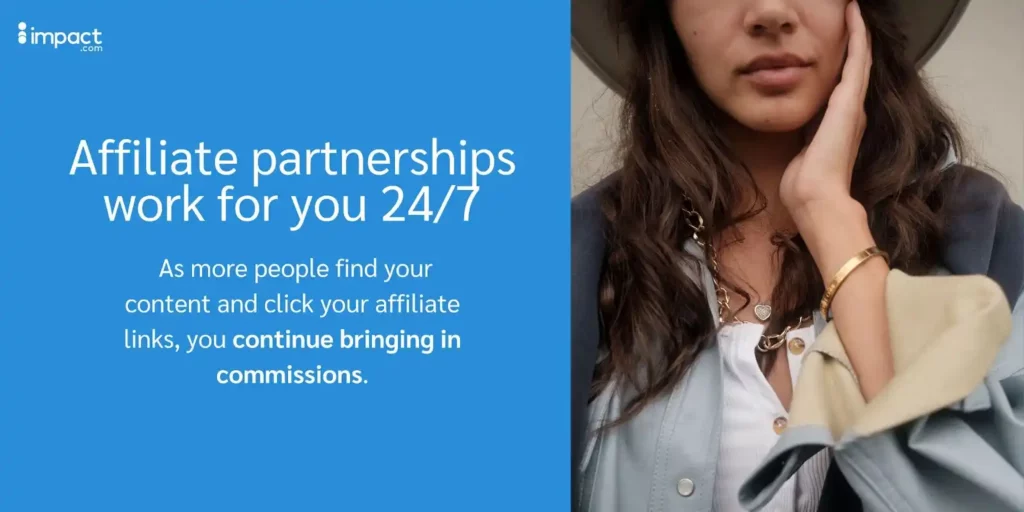
Getting started is easy:
- Pick what you love: Find brands with affiliate programs and choose products that resonate with your content. Your audience trusts your opinion, so keep it real.
- Incorporate and share: Generate your links, drop them into your content, and share them with your audience.
- Watch the money come in: The link tracking information tells the brand when someone uses your link to make a purchase.
Whether you’re a foodie blogger embedding links in your recipes or a YouTuber with affiliate links in your video descriptions—you need to balance quality content and savvy marketing.
Justin’s Tech Tips on YouTube nails the affiliate marketing game by seamlessly integrating products into his content and making it easy for viewers to shop his links.
Who should prioritize affiliate marketing?
Affiliate marketing is your game if you review products, give recommendations, or create content that naturally ties in with products. The more engaged your audience and the higher your traffic, the bigger your returns will be.
When you make killer, search-optimized content that’s easy to find, it’ll keep working for you—bringing in earnings for months (and sometimes even years).
Affiliate marketing can help you monetize no matter where you post. But if your content lives on a searchable platform, such as YouTube or an affiliate blog, it’ll have more long-term earning potential compared to platforms such as TikTok or Instagram.
Affiliate marketing can also serve as a stepping stone for small creators seeking deeper partnerships. Because the brand doesn’t have to invest money into you upfront and only pays based on performance, you have the chance to show them what you can do.
Just pull your conversion numbers, present them to the brand, and talk about other ways they can get in front of your audience.
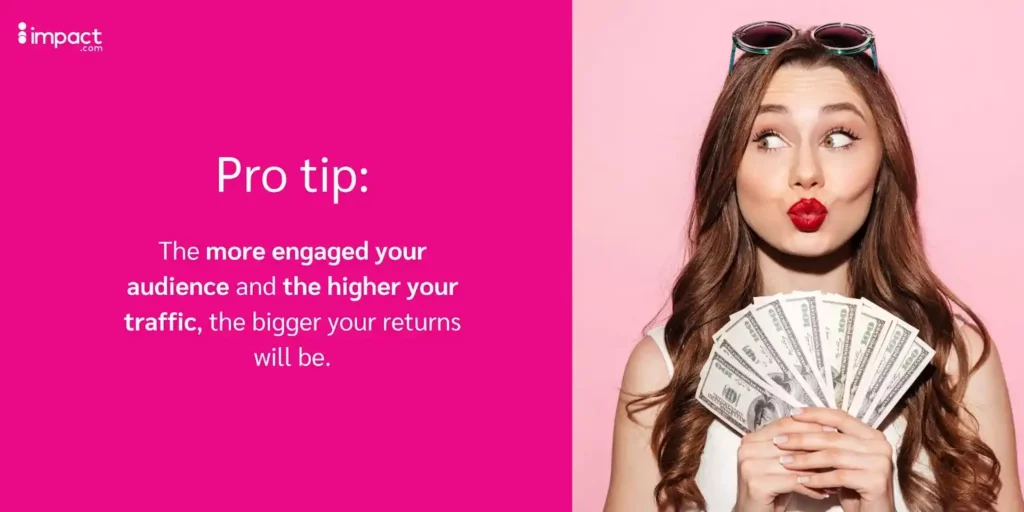
Why affiliate marketing rocks
- Passive income: It’s easy to start earning with affiliate marketing. Set up your links and let them do their thing––minimal effort, ongoing returns.
- Performance-based rewards: The more effectively your links drive sales, the more you earn.
- Flexibility: You choose the products you want to promote, keeping it genuine and aligned with your personal brand.
- Easy diversification: Combine affiliate marketing with other monetization methods. For example, get paid a flat fee for sponsoring a brand, then earn more with commissions when someone converts with your affiliate link.
The flip side (and how to flip it back)
- Traffic counts: Your earnings depend on how many people click and buy, so focus on driving traffic.
- Waiting for a paycheck: Getting paid by commission isn’t as predictable as the flat fee you can get from sponsorships, UGC, and other types of partnerships. Income often depends on conversions or purchases, so it can fluctuate. Diversify your affiliate products and monetization methods to spread the risk.
- Link management: Juggling multiple affiliate links can get tricky between keeping tabs on link performance and figuring out how they fit into your strategy. Here’s where impact.com / Creator shines, offering detailed analytics to track and optimize your affiliate game.
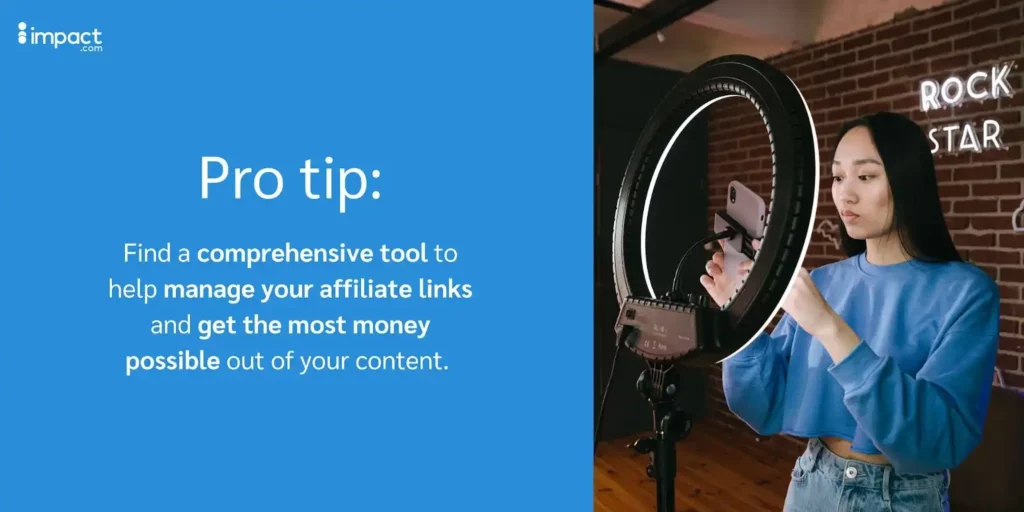
User-generated content (UGC) lets creators be true to themselves
User-generated content (UGC) is your chance to show the world your creativity while helping brands shine in an authentic light.
Voluntary UGC can involve simply posting about your favorite items and brands. Sometimes brands will pick up that content and amplify it on their accounts.
Paid UGC works a lot like freelance content creation. You earn by providing content for the brand’s official pages or ad campaigns.
Brands love UGC because it feels authentic—and they can capitalize on your content creation skills to connect with audiences and boost sales.
Here’s how paid UGC works:
- Build a UGC strategy: Find a brand in your niche and work with them to decide what kind of UGC content they want.
- Create the content: Share the UGC with the brand and go through their review and approval processes.
- Publish content: The brand uses your content on their channels and pays you for it.

Check out Hip and Humble Style for a masterclass in UGC. They’ve got the UGC game down, showcasing how to blend personal creativity with brand messaging in their post with Decorator’s Warehouse.
Who should dive into UGC?
Whether you’re a seasoned content creator or just starting out, UGC is your playground if you’ve got the knack for making content that clicks with audiences.
Here’s how to decide if UGC is right for you:
- You want to use your content creation skills to bring in some extra income (outside of creating content for your channels)
- You’re not focused on building an audience (you don’t need a lot of followers to be a UGC creator)
- You’re just starting as a creator and want to get into working with brands––UGC gives you a great way to build out your portfolio for future partnerships
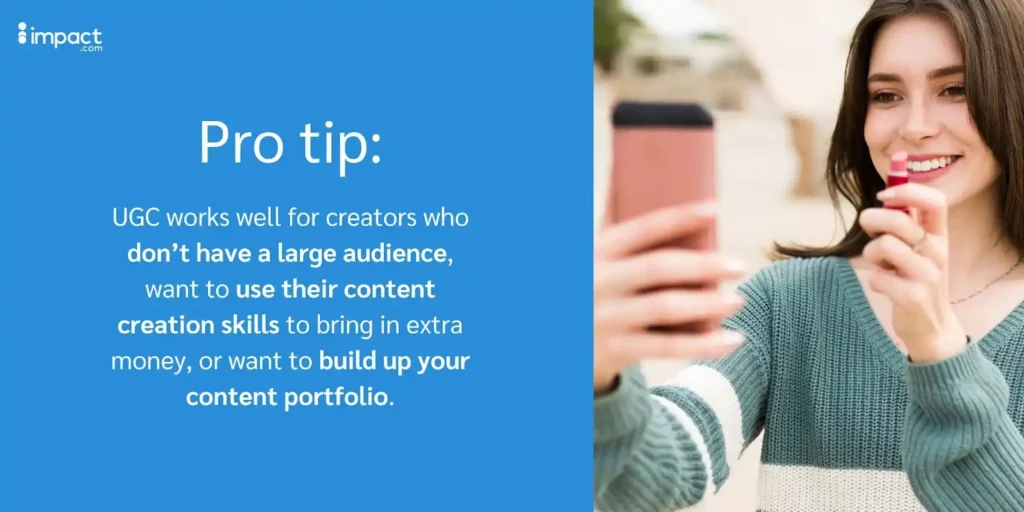
Why UGC is a creator’s best friend
- No audience required: Brands value your content creation skills instead of your audience size. Compared to other partnership models, it’s easier to start making money through UGC.
- Mix it up: A whole world of brands awaits your magic touch. So long as you build a solid portfolio and understand the market, you can branch out into multiple niches––this is harder to do with partnerships that lean on your influence instead of your content.
- Engagement gold: UGC is like catnip for engagement because it’s real, relatable, and authentic.
Challenges in the world of UGC
- Time is money: Crafting top-notch UGC that meets brand standards can consume hours.
- Feast or famine: UGC gigs might come in waves until you establish strong brand relationships, so it’s not always a steady income stream.
- Rights and wrongs: Understand your content’s rights and usage agreements, so you know when you can incorporate it into your portfolio, post to your channels, and more.
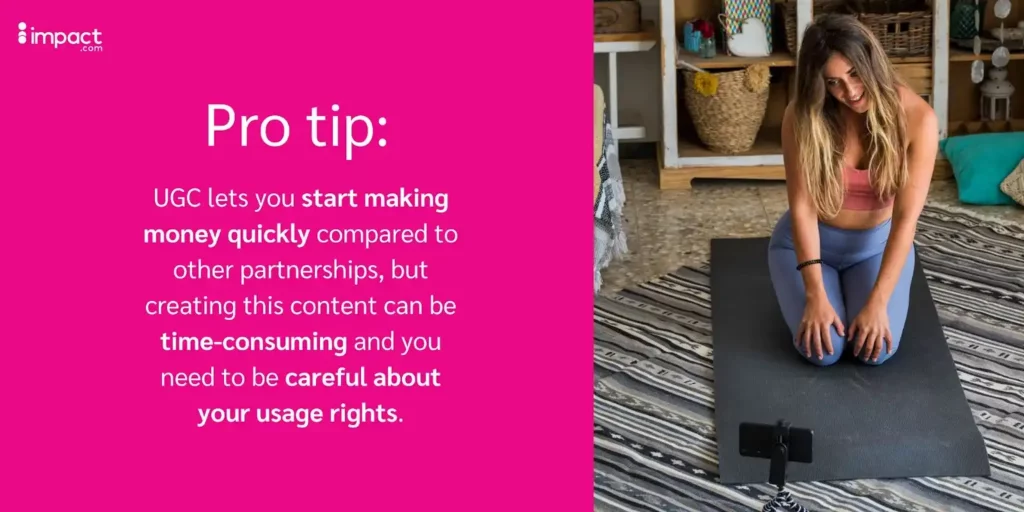
Exploring alternative ways content creators can make money
Smart creators don’t put all their eggs in one basket. Diversifying income streams cushions against uncertainty and enhances your primary monetization methods. Let’s dive into some of these other avenues.
Direct advertising gives creators autonomy
Direct advertising refers to placing ads on a creator’s website or newsletter. It’s like having your own digital billboard where you decide what gets the spotlight.
Got a website buzzing with traffic, a newsletter with lots of subscribers, or an audience that advertisers drool over? This is your playing field. But this might not be your best bet if you’re all about social media and don’t have a website.
Key considerations:
- Ad overload: Beware of cluttering your space with too many ads, as it can turn off your audience.
- The ad-blocker hurdle: Your ad revenue might take a hit with many people using ad-blockers.
- Fluctuating earnings: CPM (cost per thousand impressions) rates can vary, impacting your overall income.
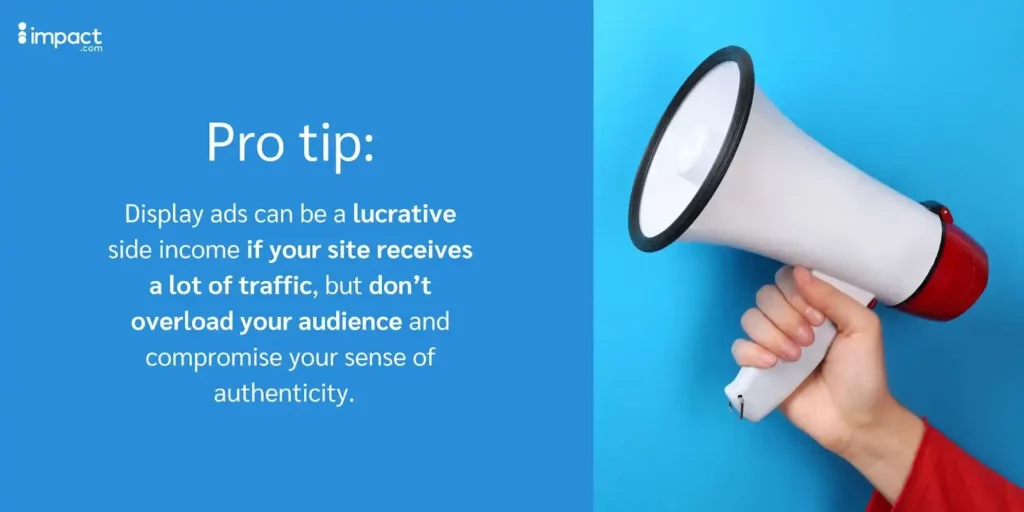
Subscription platforms monetize a loyal following
Subscription platforms like Patreon allow creators to offer exclusive content for a regular fee. Consider setting up different membership levels with perks such as early access to content, special materials, or an exclusive community.
Key considerations:
- Value proposition: Ensure your content is worth the recurring investment.
- Engagement is key: Regular interaction with subscribers is crucial to maintain their interest, strengthen your bond, and keep them from unsubscribing.
- Content galore: Be prepared to produce a high content volume consistently.
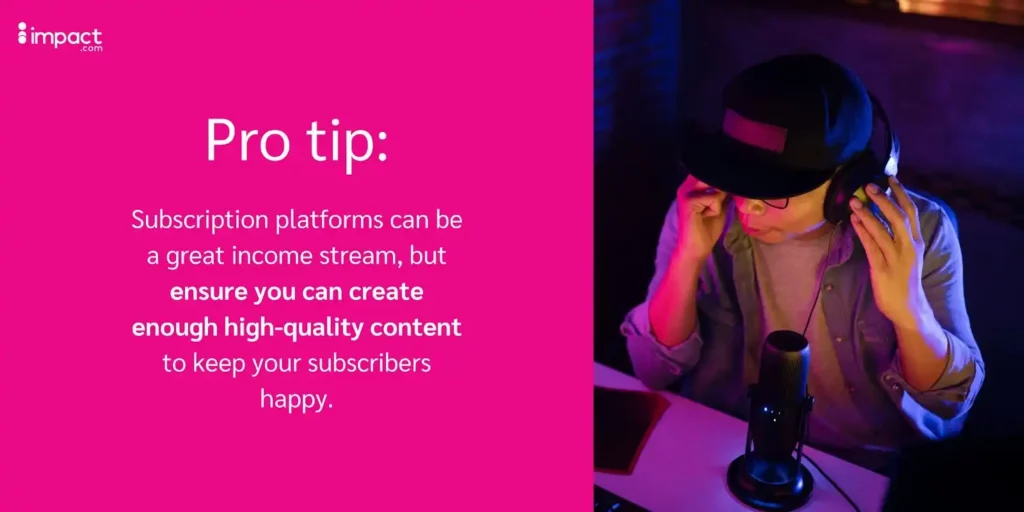
Donation platforms test the waters for new content ideas
Donation platforms like Buy Me a Coffee serve as a bridge between creators and their supporters, enabling fans to contribute financially through one-time donations.
This method is particularly effective for creators experimenting with new content ideas or seeking support for specific projects.
Key considerations:
- Communication is key: Let your audience know what the donations are for. Whether it’s funding a new project or showing appreciation for your content, transparency builds trust.
- Supplemental income: Remember that donations are sporadic by nature. They’re a great supplement to your income but shouldn’t be a primary source.
- Community engagement: Encourage your community to engage with your content by acknowledging their support and involving them in your creative process. This can lead to a stronger connection and potentially more support.
Creators can sell merchandise to engaged fans
For those with an engaged following, selling custom merchandise can be lucrative. There’s an opportunity for creators to design and sell custom merchandise that reflects their brand or content themes. Whether it’s on-demand printing or bulk production, you can create products that resonate with your personal brand.
Key considerations:
- Upfront costs: Be mindful of the initial investment for production and storage.
- Logistics: Consider the shipping and customer service aspects.
- Quality checks: Many third-party companies will manage merch for you, but the quality of products can vary so vet brands carefully and build in regular checks.
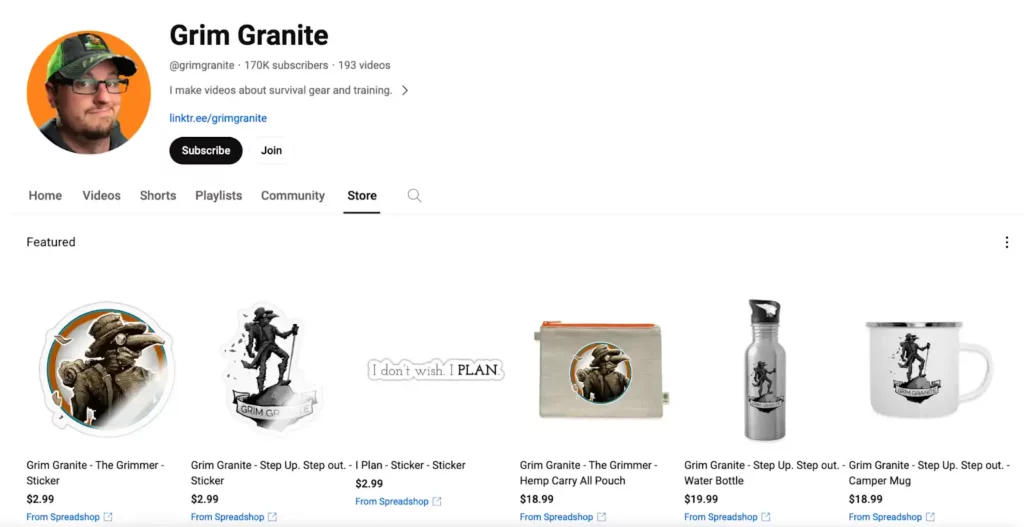
Outdoor and survivalist YouTuber Grim Granite sells merchandise to loyal followers through the platform.
Consulting provides a new way to use your expertise
Creators with specialized knowledge can offer consulting services. This could range from business advice to personalized coaching, billed hourly or per project.
Key considerations:
- Juggling content and consulting: Ensure you can manage both without compromising quality.
- Establishing authority: Building a professional reputation in your field is crucial.
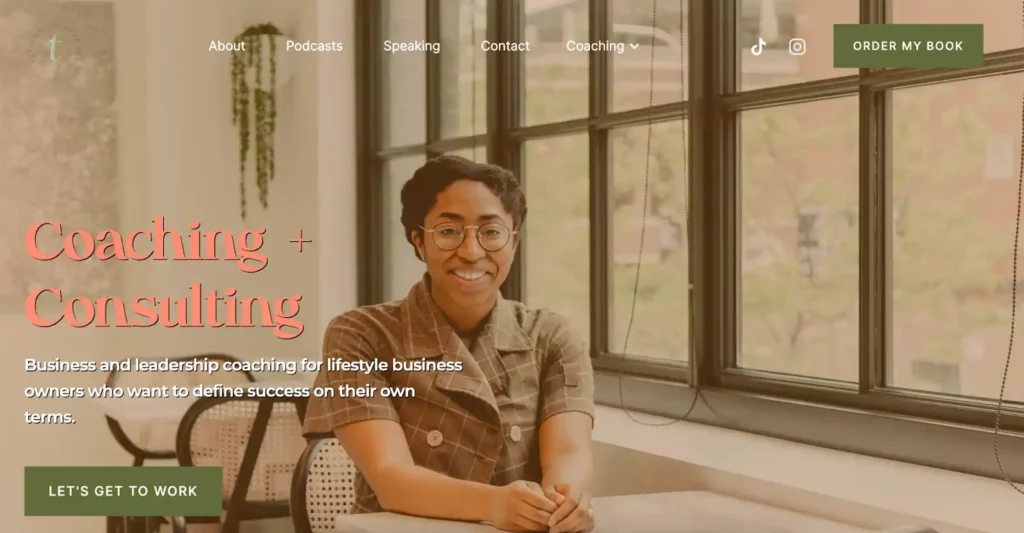
Entrepreneurship and wellness creator Taylor Elyse Morrison offers multiple coaching and consulting services to help lifestyle business owners reach their full potential.
Online courses put your niche knowledge to work
Turn your expertise into a passive income stream by creating online courses. You can host the courses on your website or use platforms like Podia. Develop a curriculum, record lessons, and offer resources to students.
Key considerations:
- Initial effort: Creating a quality course takes significant time and effort.
- Reusing content: If you’ve already created a lot of educational content, you may be able to repurpose and organize some of it into a course.
- Competition and marketing: Be ready to face stiff competition and invest in ongoing promotion.

Entrepreneurship creator Joshua Mayo offers an exclusive course for a small fee that helps new YouTubers succeed on the platform.
Product collabs let creators take their experience to the next level
Work with brands to create unique products that reflect your identity. You’ll be involved in everything from design to marketing.
Key considerations:
- Following and identity: This works best for those with a significant following and a strong brand identity.
- The right partner: Look for a collaborative brand with the necessary production capabilities.
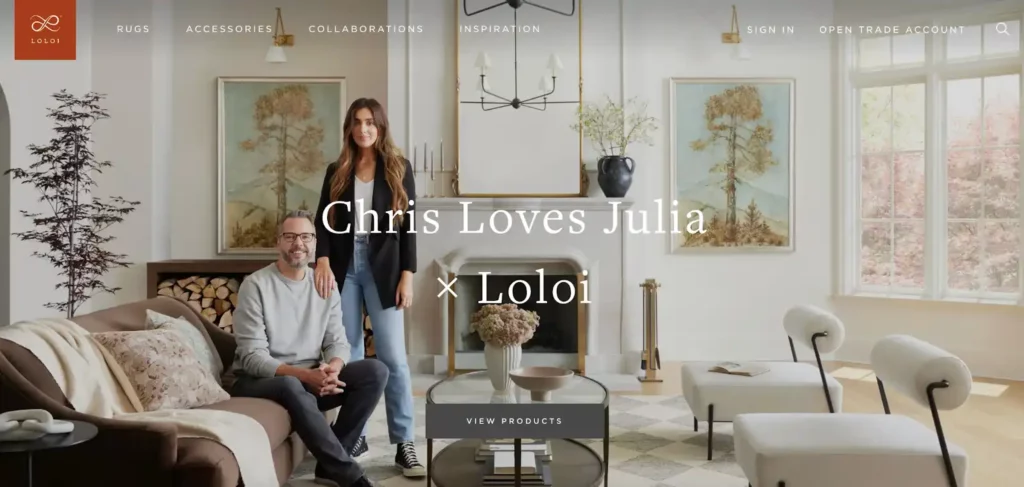
Interior design creator Chris Loves Julia partnered with Loloi to create a rug line that reflects the power couple’s signature warm and homey design.
The path to prosperity: tap into multiple monetization channels
The underlying theme of these income streams is the same: offer value, stay true to your brand, and understand your audience.
With these principles in mind, content monetization is your oyster.
Diversification is your financial backbone. Relying on just one channel is a gamble that may not pay off in the long run. By exploring various sources of income, you broaden your earning potential and build a more resilient career.
Keep on learning with these additional resources:
- What brands want: building successful creator partnerships in 2023 (research report)
- 5 fool-proof tactics to become a top-tier UGC creator and grow your income (blog)
- 4 research-backed ways content creators can increase buyer intent (blog)
FAQS
The earning potential on content creator platforms varies widely and depends on factors like audience size, engagement rate, and content type.
Generally, platforms like YouTube, Twitch, and Patreon are known for potentially high earnings—especially for creators with large and engaged followings. YouTube, for instance, offers ad revenue, sponsorships, and Super Chat payments, while Patreon allows for steady income through subscriber-based models.
However, the “most paying” platform can differ based on your content strategy, positioning, and audience demographics.
Instagram creators can monetize in several ways:
- Sponsored posts: Collaborating with brands to create content featuring products or services.
- Affiliate marketing: Earning commissions by promoting products and including affiliate links in your posts or bio descriptions.
- IGTV ads: Earning through ads displayed in your IGTV videos.
- Instagram Shopping: Tagging a brand’s products in posts and stories to facilitate direct purchases by followers.
- Selling products or services: Leveraging Instagram to sell merchandise, digital products, or services.
YouTube creators primarily earn through the following methods:
- Ad revenue: Earnings generated from ads displayed on your videos through the YouTube Partner Program.
- Channel memberships: Subscribers pay a recurring fee for exclusive perks.
- Super Chat and stickers: Viewers can pay to highlight their messages during live streams.
- Affiliate links: Including product links in video descriptions and earning a commission on sales.
- Sponsorships: Partnering with brands for sponsored content.
Absolutely! The demand for content creators has been steadily growing. With the increasing importance of social media presence for brands, there’s a high demand for skilled content creators. Two out of three brands plan to expand their creator programs next year.
This demand spans various platforms and includes multiple content types, such as videos, blogs, social media posts, and podcasts. The key for creators is to stay adaptable, authentic, and in tune with current trends and audience preferences.



